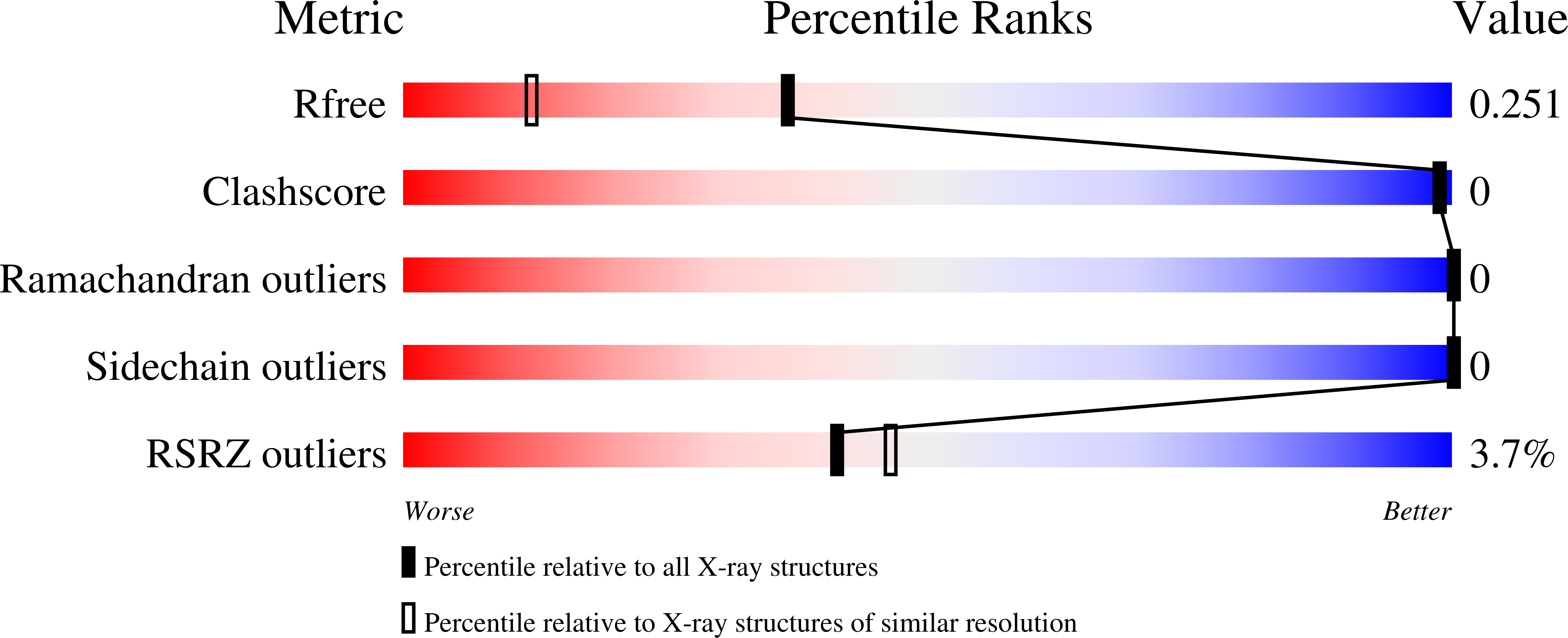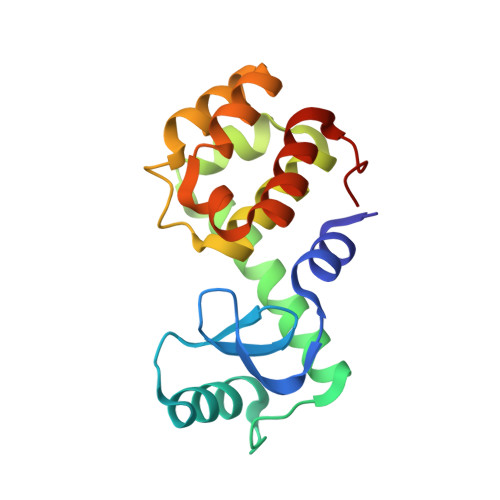Hydrogen Bonding of 1,2-Azaborines in the Binding Cavity of T4 Lysozyme Mutants: Structures and Thermodynamics.
Lee, H., Fischer, M., Shoichet, B.K., Liu, S.Y.(2016) J Am Chem Soc 138: 12021-12024
- PubMed: 27603116
- DOI: https://doi.org/10.1021/jacs.6b06566
- Primary Citation of Related Structures:
5JWS, 5JWT, 5JWU, 5JWV, 5JWW - PubMed Abstract:
Protein crystallography and calorimetry were used to characterize the binding of 1,2-azaborines to model cavities in T4 lysozyme in direct comparison to their carbonaceous counterparts. In the apolar L99A cavity, affinity for Ab dropped only slightly versus benzene. In the cavity designed to accommodate a single hydrogen bond (L99A/M102Q), Gln102¨TO¡¤¡¤¡¤H-N hydrogen bonding for Ab and BEtAb was observed in the crystallographic complexes. The strength of the hydrogen bonding was estimated as 0.94 and 0.64 kcal/mol for Ab and BEtAb, respectively. This work unambiguously demonstrates that 1,2-azaborines can be readily accommodated in classic aryl recognition pockets and establishes one of 1,2-azaborine's distinguishing features from its carbonaceous isostere benzene: its ability to serve as an NH hydrogen bond donor in a biological setting.
Organizational Affiliation:
Department of Chemistry, Boston College , Chestnut Hill, Massachusetts 02467, United States.


















